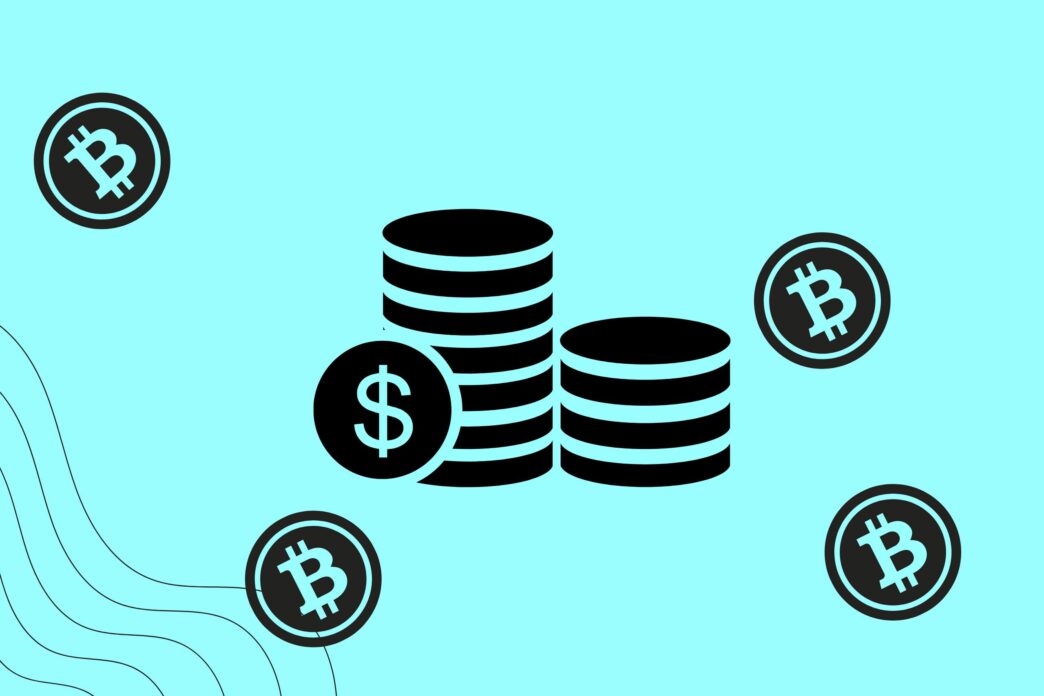In the rapidly evolving landscape of global finance, the United States faces unprecedented fiscal challenges while simultaneously navigating the transformative potential of digital assets. A groundbreaking proposal has emerged that seeks to address both issues simultaneously: Bitcoin-Enhanced Treasury Bonds, or “₿ Bonds.” This innovative financial instrument represents a paradigm shift in how governments might manage debt while building strategic digital asset reserves. Treasury securities with the high-growth potential of Bitcoin. Proposed by the Bitcoin Policy Institute in a detailed white paper titled Bitcoin-Enhanced Treasury Bonds: An Idea Whose Time Has Come, this innovative financial instrument aims to address America’s looming fiscal challenges while capitalizing on Bitcoin’s unique properties as a strategic reserve asset. This article dives deep into the mechanics, benefits, risks, and broader implications of bitcoin-enhanced treasury bonds, offering insights for both crypto enthusiasts and newcomers to the space.
Understanding the Fiscal Challenge
The United States currently faces what economists call a “refinancing wall” – approximately $14 trillion of federal debt maturing within the next three years. When this debt is refinanced at current interest rates (hovering around 4.5%), it creates a substantial burden on taxpayers and constrains fiscal flexibility. This refinancing challenge has prompted Treasury Secretary Scott Bessent to consider spreading future Treasury issuances across duration to avoid similar situations in the future.
Let’s put this in perspective: $14 trillion is equivalent to roughly 60% of the entire U.S. economy’s annual output. Refinancing this debt at current rates would cost American taxpayers hundreds of billions in interest payments annually – funds that could otherwise support infrastructure, education, healthcare, or tax relief.
The Strategic Bitcoin Reserve Executive Order
Against this backdrop, on March 6, 2025, President Trump signed an Executive Order establishing a Strategic Bitcoin Reserve and a U.S. Digital Asset Stockpile. This order officially designated bitcoin as “digital gold” due to its scarcity, security properties, and fixed supply of 21 million coins. The Executive Order established several key principles:
- Bitcoin is now officially designated as a reserve asset, similar to gold
- The Strategic Bitcoin Reserve has been initially capitalized with bitcoin owned by the Department of Treasury from forfeited criminal assets
- The United States will not sell bitcoin deposited into the Strategic Bitcoin Reserve
- The Secretaries of Treasury and Commerce are directed to develop “budget-neutral strategies” to acquire additional bitcoin
As President Trump stated in his announcement speech at the Bitcoin 2025 conference, “We need to embrace bitcoin to drive economic growth and technological leadership. America will be the bitcoin superpower.”
What Are Bitcoin-Enhanced Treasury Bonds?
Bitcoin-Enhanced Treasury Bonds (₿ Bonds) represent a creative solution to address two significant challenges simultaneously: refinancing government debt at lower interest rates and building America’s bitcoin reserves without additional taxpayer costs.
Here’s how they work:
- The U.S. Treasury would issue ₿ Bonds with a stated face amount (e.g., $100) and maturity (e.g., 10 years)
- 10% of the proceeds from each bond would be used to purchase bitcoin for the Strategic Bitcoin Reserve
- The remaining 90% would finance traditional government operations
- The bonds would pay a significantly lower interest rate than traditional Treasury bonds (proposed at 1% versus 4.5% for traditional 10-year Treasury bonds)
- Investors would receive two returns: the fixed interest payments plus a variable bitcoin-linked payment at maturity
The bitcoin-linked payment would follow a threshold structure. Investors would receive 100% of bitcoin appreciation up to a threshold (e.g., 4.5% compound annual return), and 50% of additional appreciation beyond that threshold. The government would retain the remaining 50% of gains beyond the threshold.
A Win-Win-Win Proposition
The financial benefits of the ₿ Bonds program are substantial and multi-faceted, potentially creating value for the government, investors, and American families.
Government Savings
The most immediate benefit is the significant reduction in interest payments. If $2 trillion of ₿ Bonds were issued (approximately 20% of the 2025 refinancing needs):
- Traditional 10-year Treasury bonds at 4.5% would cost $90 billion annually
- ₿ Bonds at 1% would cost only $20 billion annually
- This creates annual interest savings of $70 billion
- Over 10 years, this accumulates to $700 billion in nominal savings
- The present value of these savings is approximately $554.4 billion
After accounting for the initial $200 billion bitcoin purchase (10% of the $2 trillion issuance), the net taxpayer savings amount to $354.4 billion in present value terms – even if bitcoin prices remain static. This represents real fiscal relief that could fund critical government programs or reduce additional borrowing needs.
Strategic Bitcoin Reserve Growth
The potential growth of the Strategic Bitcoin Reserve represents another significant long-term benefit. Based on historical bitcoin performance metrics, the government’s share of appreciation could generate substantial value across different growth scenarios:
- At a 30% compound annual growth rate (CAGR, 10th percentile of historical performance), the government’s share would reach approximately $0.83 trillion after 10 years
- At a 37% CAGR (25th percentile), the government’s share would grow to approximately $1.776 trillion
- At a 53% CAGR (historical median performance), the government’s share would reach approximately $6.48 trillion
- At higher growth rates (75th-90th percentile), the values become even more substantial
Analysis indicates that at a CAGR of approximately 36.62% (slightly below the 25th percentile of historical performance), the government’s share would be sufficient to offset as much as $50.8 trillion of federal debt by 2045.
Benefits for American Families
A powerful component of the ₿ Bond program is the proposed special tax treatment for U.S. taxpayers. The program recommends that both interest payments and bitcoin-linked gains at maturity receive tax-advantaged status:
- Interest payments would be exempt from federal income tax (similar to municipal bonds)
- Bitcoin-linked gains at maturity would be exempt from capital gains taxes when held to maturity
This tax treatment would create a powerful savings vehicle for American households, particularly middle-class families looking to build wealth while managing risk. The combination of principal protection, potential bitcoin upside, and tax advantages makes ₿ Bonds an attractive investment option.
Market Depth and Investor Appeal
The ₿ Bond structure creates an attractive investment opportunity for diverse investor segments:
Institutional Investors
For institutional investors, ₿ Bonds provide exposure to bitcoin within a familiar, government-backed instrument. Many institutional investors have regulatory, custody, and governance challenges that prevent direct bitcoin holdings. ₿ Bonds would provide a compliant pathway to bitcoin exposure while maintaining the safety and liquidity characteristics of Treasury securities.
Foreign Investors
Foreign investors would receive potential diversification benefits coupled with the security offered by traditional U.S. Treasury bonds. As central banks and sovereign wealth funds seek to diversify their holdings beyond traditional reserve currencies, ₿ Bonds offer a unique instrument combining dollar exposure with potential bitcoin appreciation.
Retail Investors
For retail investors, ₿ Bonds democratize access to bitcoin’s growth potential within a safe, familiar investment vehicle. The tax-advantaged status makes them particularly attractive for retirement accounts, education savings, and general household wealth building.
The Treasury market offers sufficient depth to absorb the proposed ₿ Bond issuance without significant disruption. With over $30 trillion of Treasury securities outstanding and annual issuance typically ranging from $5-7 trillion, the market has the capacity to accommodate this innovation.
Risk Management and Implementation Considerations
While the potential benefits are substantial, the program also faces implementation challenges that require careful consideration:
Market and Price Risks
Bitcoin has historically exhibited significant price volatility. To mitigate this risk, the program:
- Limits bitcoin allocation to 10% of bond proceeds
- Ensures principal protection for bondholders
- Generates interest savings that offset potential bitcoin losses
- Implements phased approach allowing program adjustment
- Aligns with bitcoin’s tendency toward appreciation over extended periods
Operational and Security Risks
Securing bitcoin holdings at a national scale presents novel challenges. The program would implement:
- Multi-institutional, multi-signature custody solutions
- Geographic distribution of storage facilities
- Cold storage for the vast majority of holdings
- Regular security audits by internal and external experts
- Comprehensive incident response protocols
Regulatory and Legal Considerations
The implementation of ₿ Bonds would require coordination across multiple regulatory bodies. The program proposes:
- Beginning with a pilot program under existing Treasury authority
- Seeking explicit legislative authorization through a “₿ Bond Act”
- Early engagement with relevant Congressional committees
- Coordination with the President’s Working Group on Digital Asset Markets
Implementation Roadmap
The policy brief outlines a three-phase implementation approach:
Phase 1: Pilot Program (3-6 months)
- Initial issuance of $5-10 billion to test key operational aspects
- Establishment of secure custody infrastructure
- Development of operational procedures for bitcoin acquisition and management
- Testing of market reception and investor demand
Phase 2: Policy Development and Expansion (6-12 months)
- Analysis of pilot results and refinement of program structure
- Engagement with Congress for explicit authorization
- Coordination with regulatory agencies
- Scaled issuance to $100-200 billion
- Development of direct-to-consumer distribution channels
Phase 3: Full Implementation (12-24 months)
- Integration of ₿ Bonds into the regular Treasury auction calendar
- Scaling to reach the target of up to 20% of refinancing needs
- Enhancement of secondary market support mechanisms
- Full implementation of retail investor access
Strategic Benefits Beyond Fiscal Impact
Beyond the direct financial benefits, the ₿ Bond program offers several strategic advantages:
Economic Competitiveness and Innovation Leadership
The program positions the United States as a leader in integrating traditional finance with bitcoin, supporting broader economic competitiveness objectives. It demonstrates technological leadership and financial innovation, attracting talent, investment, and entrepreneurial activity in the bitcoin sector.
Financial Inclusion and Household Savings
By providing all Americans with access to potential bitcoin appreciation through a secure, regulated instrument, ₿ Bonds advance financial inclusion objectives. Americans across socioeconomic groups gain exposure to bitcoin’s growth potential without requiring specialized knowledge or high risk tolerance.
Strategic Positioning and Global Leadership
The Strategic Bitcoin Reserve provides a hedge against inflation, currency debasement, and potential erosion of the dollar’s reserve currency status. By taking a leadership role in sovereign bitcoin integration, the United States establishes norms and standards rather than reacting to frameworks established by other nations.
Intergenerational Equity and Long-Term Fiscal Health
The ₿ Bond program addresses intergenerational equity by establishing a mechanism for long-term debt reduction that doesn’t rely on austerity measures or tax increases. The immediate interest savings reduce current fiscal pressure, while the potential for Strategic Bitcoin Reserve growth creates a pathway for debt reduction through asset appreciation.
Expert Perspectives on ₿ Bonds
Bitcoin-Enhanced Treasury Bonds have generated significant discussion among financial experts, policymakers, and cryptocurrency thought leaders.
Professor Saifedean Ammous, economist and author of “The Bitcoin Standard,” commented: “This proposal represents a fascinating convergence of traditional government finance with the disruptive potential of bitcoin. It acknowledges bitcoin’s role as a strategic asset while leveraging the unique properties of the U.S. Treasury market.”
Michael Saylor, founder of MicroStrategy and prominent bitcoin advocate, noted: “The Strategic Bitcoin Reserve concept aligns perfectly with our corporate strategy of using bitcoin as a treasury reserve asset. The U.S. government is recognizing what forward-thinking corporations already understand – bitcoin is the ultimate store of value in a digital age.”
Former Treasury Secretary Larry Summers expressed cautious optimism: “While the volatility of bitcoin presents legitimate concerns, the structure of ₿ Bonds with limited allocation and principal protection represents a thoughtful approach to managing these risks while potentially capturing upside.”
Cathie Wood, CEO of Ark Invest, highlighted the strategic significance: “By establishing a substantial bitcoin position now, the United States would secure a first-mover advantage in what could become a critical competitive arena between nation-states in the coming decades.”
The Global Context: International Implications
The introduction of Bitcoin-Enhanced Treasury Bonds would likely have significant international repercussions. Several countries have already taken steps to incorporate bitcoin into their national strategies:
- El Salvador made bitcoin legal tender in 2021
- Brazil has approved bitcoin ETFs and regulated cryptocurrency exchanges
- Germany has permitted special funds to allocate up to 20% to cryptocurrencies
- Switzerland has established comprehensive regulatory frameworks for digital assets
However, none have integrated bitcoin directly into their sovereign debt instruments at the scale proposed for ₿ Bonds. The United States’ adoption of this approach could potentially trigger a global reassessment of how nations manage their reserves and debt issuance.
International financial institutions like the IMF and World Bank would likely monitor the implementation closely, while central banks worldwide would evaluate the implications for their own reserve management strategies. Some nations might follow the U.S. lead with similar instruments, while others might adopt more cautious approaches depending on their specific economic circumstances and policy objectives.
Potential Impact on Financial Markets
The introduction of ₿ Bonds could have several effects on broader financial markets:
Treasury Market Dynamics
By offering a new type of instrument with different risk-return characteristics, ₿ Bonds could attract new investors to the Treasury market. This expanded investor base could potentially reduce dependence on traditional sources of Treasury demand, such as foreign central banks.
Bitcoin Market Effects
The acquisition of bitcoin for the Strategic Bitcoin Reserve would represent significant demand in the bitcoin market. While the proposal suggests dollar-cost averaging and professional execution to minimize market impact, the signaling effect of U.S. government participation could substantially influence market sentiment and institutional adoption.
Financial Innovation Catalyst
The development of ₿ Bonds could accelerate financial innovation in several areas:
- Enhanced custody solutions for digital assets
- New risk management tools for bitcoin exposure
- Novel financial products combining traditional and digital assets
- Advanced security protocols for institutional bitcoin holdings
Yield Curve Implications
The introduction of a new Treasury instrument with different characteristics could influence the broader yield curve. If ₿ Bonds attract substantial investor interest, they might affect demand for conventional Treasury securities and potentially influence interest rates across various maturities.
Technical Implementation Challenges
The successful implementation of ₿ Bonds would require addressing several technical challenges:
Bitcoin Custody at Scale
Securing billions of dollars worth of bitcoin would require institutional-grade custody solutions beyond what currently exists in the market. The government would need to develop or adopt sophisticated multi-signature protocols, cold storage systems, and comprehensive security frameworks.
Transaction Execution
Acquiring large quantities of bitcoin ($200 billion under the proposed program) would require careful execution to avoid market impact. This would likely involve partnerships with multiple liquidity providers, sophisticated trading algorithms, and professional execution services.
Integration with Existing Treasury Systems
The Treasury Department would need to integrate bitcoin-related operations with its existing systems for debt issuance, accounting, and reporting. This would require new software, processes, and expertise.
Security Auditing and Oversight
Regular security audits and comprehensive oversight mechanisms would be essential to maintain public confidence in the program. This would involve both internal and external expertise, with transparent reporting on security measures and reserve management.
Comparing ₿ Bonds to Traditional Financial Instruments
To better understand the innovation represented by Bitcoin-Enhanced Treasury Bonds, it’s useful to compare them to existing financial instruments:
Traditional Treasury Bonds
Unlike conventional Treasury bonds that offer fixed interest payments, ₿ Bonds combine lower fixed payments with potential upside linked to bitcoin performance. This hybrid structure creates a different risk-return profile while maintaining the principal protection characteristic of Treasury securities.
Treasury Inflation-Protected Securities (TIPS)
TIPS provide protection against inflation by adjusting principal based on the Consumer Price Index. ₿ Bonds offer a different kind of hedge – against potential currency debasement and monetary inflation – through their bitcoin component.
Gold-Backed Bonds
Historically, some governments have issued gold-backed bonds or similar instruments. ₿ Bonds represent a digital evolution of this concept, using bitcoin’s properties as “digital gold” to enhance traditional debt instruments.
Corporate Convertible Bonds
In the corporate world, convertible bonds allow investors to convert debt to equity under certain conditions. ₿ Bonds share some conceptual similarities but maintain the debt character of the instrument while providing exposure to bitcoin appreciation.
Bitcoin ETFs
While Bitcoin ETFs provide direct exposure to bitcoin price movements, they lack the principal protection and tax advantages proposed for ₿ Bonds. ₿ Bonds offer a more conservative approach to bitcoin exposure, suitable for risk-averse investors.
Potential Criticisms and Counterarguments
Any innovative proposal warrants critical examination. Several potential criticisms of the ₿ Bond concept include:
Bitcoin Volatility Concerns
Critics might argue that bitcoin’s historical volatility makes it unsuitable for inclusion in Treasury instruments. However, the proposal addresses this through limited allocation (10%), principal protection, and substantial interest savings that offset potential bitcoin losses.
Technological Complexity
The technical challenges of secure bitcoin custody and management at a national scale are significant. However, the phased implementation approach allows for testing and refinement of operational procedures before full-scale deployment.
Regulatory Uncertainty
The hybrid nature of ₿ Bonds raises questions about their regulatory classification and treatment. The proposal recommends early engagement with relevant regulatory agencies to establish clear guidelines.
Potential for Speculative Behavior
Some might argue that government-issued instruments with bitcoin exposure could encourage speculative behavior. However, the 10-year maturity and tax advantages for holding to maturity are designed to encourage long-term investment rather than speculation.
Historical Precedent
Critics might note the lack of historical precedent for such instruments. While true, financial innovation often lacks direct precedents, and the proposal builds on established concepts like inflation-protected securities and commodity-linked bonds.
The Path Forward: Recommendations for Policymakers
The policy brief concludes with specific recommendations for policymakers:
- Commission a comprehensive Treasury analysis examining various ₿ Bond structures with different bitcoin allocations, maturity periods, and performance scenarios
- Develop sophisticated pricing models accounting for bitcoin’s unique characteristics
- Draft targeted enabling legislation authorizing ₿ Bond issuance
- Design a clear integration strategy between the Strategic Bitcoin Reserve and ₿ Bonds
- Establish objective evaluation criteria comparing ₿ Bond performance to traditional Treasury securities
By proceeding deliberately and transparently, policymakers can properly evaluate whether this innovative approach offers a viable complement to traditional debt management strategies.
A Vision for American Bitcoin Leadership
The Bitcoin-Enhanced Treasury Bond proposal represents a bold vision for addressing America’s fiscal challenges while positioning the nation as a leader in the integration of traditional finance and digital assets. By combining the stability of Treasury instruments with the growth potential of bitcoin, ₿ Bonds offer a unique value proposition for the government, investors, and American families.
The program directly implements President Trump’s directive to develop budget-neutral strategies for expanding the Strategic Bitcoin Reserve. It creates a structured mechanism to acquire bitcoin without imposing costs on taxpayers while simultaneously addressing the significant debt refinancing challenge facing the Treasury.
Beyond the direct fiscal benefits, the program supports American economic competitiveness, financial inclusion, and strategic positioning in the evolving global financial landscape. It represents a forward-thinking approach to debt management that aligns with the country’s technological leadership and innovation capacity.
As the United States navigates the complex challenges of the 21st century, innovative financial instruments like Bitcoin-Enhanced Treasury Bonds offer promising pathways to fiscal sustainability, economic growth, and technological leadership. By carefully implementing and refining this concept, America can address current fiscal challenges while establishing a pathway to long-term prosperity for future generations.
The key takeaways from this analysis are clear: Bitcoin-Enhanced Treasury Bonds represent a potentially transformative approach to government debt management that could reduce interest costs by $70 billion annually while building America’s strategic bitcoin reserve at no additional cost to taxpayers. The program offers substantial potential benefits for the government through interest savings and bitcoin appreciation, for investors through tax advantages and bitcoin exposure, and for the nation through enhanced economic competitiveness and global leadership. While implementation challenges exist, they can be addressed through a phased approach with appropriate risk management and stakeholder engagement. If successful, ₿ Bonds could establish a new paradigm for integrating traditional finance with digital assets, positioning the United States as the global bitcoin superpower for decades to come.




















